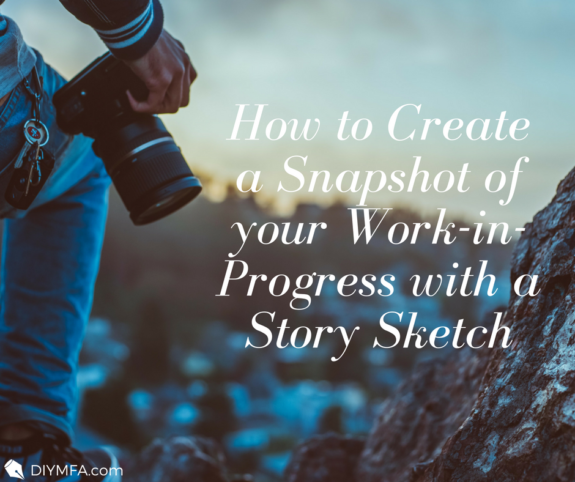I first learned to sketch out a story in a novel-writing class. The purpose of the sketch is to provide a snapshot of your work-in-progress (WIP), capturing all the important information on one page so that you can see it all at a glance.
This technique is especially useful when you need to give a short excerpt of your WIP to a critique partner who has never seen the project before. In the writing class where I first learned this technique, all the students were submitting from novels-in-progress so the Rough Sketch (as our teacher called it) was essential for bringing the rest of the class up to speed. Since taking that class, I made some adjustments to the Rough Sketch, renamed it as “Story Sketch” and added several of my own touches.
Here’s how to create a Story Sketch for your WIP. First, download a Story Sketch Worksheet by clicking the link and fill it out. Read on for an explanation of the worksheet.
Title:
This one is obvious, but worth mentioning nonetheless. Make sure the title of your WIP is at the top of your Story Sketch.
Flap Copy:
The flap copy is the description you would find on the inside flap of your WIP if it were a printed book. It’s like a short teaser enticing readers to want to pick up your book and read it.
Important Characters:
Choose five. Yes, just five characters out of your entire cast. I know it might be tough, but narrow the choices down to the five most important players.
World:
Briefly describe the setting or world where your story takes place.
Narration:
What is the point of view for your piece? 1st Person? 3rd Person? Who narrates the story? What words capture the voice of the narration? Formal? Conversational? Snarky, perhaps?
Fortune Cookie:
The rectangle represents the fortune inside a fortune cookie. In this rectangle, write a fortune cookie saying that captures the theme of your story. (E.g. The Wizard of Oz might be summed up by “There’s no place like home.”)
Music:
What song or piece of music captures the mood of your piece?
Images:
Collect a few images that communicate the essence of your story and attach them to your rough sketch. You can also include a paint chip or fabric swatch. If you have artistic tendencies, you can also include doodles or sketches.







